Archives
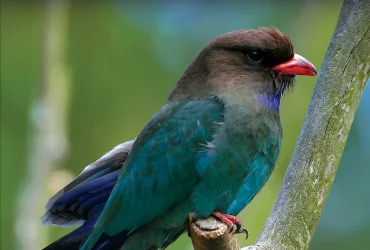 v4i1.58
v4i1.58ISSN: 1800-427X (print)
eISSN: 1800-427X (online)
DOI:10.47605/tapro.v4i1.58
Published date: 28 May 2012
Pp. 1–4
EDITORIAL : How embarrassing can it get? Or: Taxonomy undermined
Sven O Kullander
Section Editor: Taprobanica, the journal of Asian Biodiversity
Whereas biological systematics and taxonomy are probably about the same kind of scientific enterprise, they were separated by Ernst Mayr in his classical text book, and taxonomy became cemented as a subset of systematics. A little over 40 years have passed since these definitions were expressed, and the work in which they appeared has become obsolete with the appearance of new technology and new philosophy about what are the fundamental aspects of species and higher taxa, especially with the development of phylogenetic systematics and facility of studying factors of inheritance at molecular level. Nevertheless, biological systematics remains the fundamental powerful scientific domain for understanding and expressing biological diversity, and keeps its definitions.
eISSN: 1800-427X (online)
DOI:10.47605/tapro.v4i1.58
Published date: 28 May 2012
Pp. 1–4
EDITORIAL : How embarrassing can it get? Or: Taxonomy undermined
Sven O Kullander
Section Editor: Taprobanica, the journal of Asian Biodiversity
Whereas biological systematics and taxonomy are probably about the same kind of scientific enterprise, they were separated by Ernst Mayr in his classical text book, and taxonomy became cemented as a subset of systematics. A little over 40 years have passed since these definitions were expressed, and the work in which they appeared has become obsolete with the appearance of new technology and new philosophy about what are the fundamental aspects of species and higher taxa, especially with the development of phylogenetic systematics and facility of studying factors of inheritance at molecular level. Nevertheless, biological systematics remains the fundamental powerful scientific domain for understanding and expressing biological diversity, and keeps its definitions.
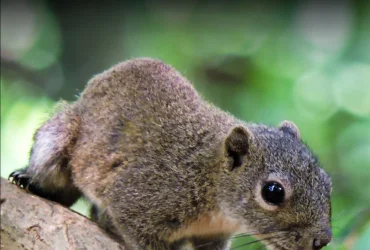 v10i1.254
v10i1.254ISSN: 1800-427X (print)
eISSN: 1800-427X (online)
DOI:10.47605/tapro.v10i1.254
Submitted date: 19 December 2020
Published date: 27 May 2021
Pp. 79.
ERRATUM :Gowande, G.G., S.R. Ganesh and Z.A. Mirza (2020). A new cryptic species of bush frog (Amphibia: Anura: Raorchestes) from the Southern Eastern Ghats, India. Taprobanica, 9 (2): 164–173 + pls. 49–50.
eISSN: 1800-427X (online)
DOI:10.47605/tapro.v10i1.254
Submitted date: 19 December 2020
Published date: 27 May 2021
Pp. 79.
ERRATUM :Gowande, G.G., S.R. Ganesh and Z.A. Mirza (2020). A new cryptic species of bush frog (Amphibia: Anura: Raorchestes) from the Southern Eastern Ghats, India. Taprobanica, 9 (2): 164–173 + pls. 49–50.
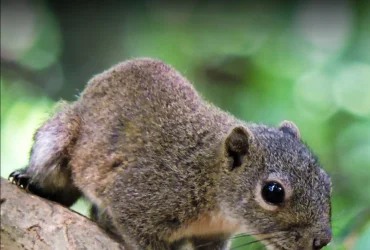 v10i1.253
v10i1.253ISSN: 1800-427X (print)
eISSN: 1800-427X (online)
DOI:10.47605/tapro.v10i1.253
Submitted date: 9 April 2021
Accepted date: 10 May 2021
Published date: 27 May 2021
Pp. 71–78, pl. 16.
On large colonies of rufous horseshoe bats (Rhinolophus rouxii), western Sri Lanka
A.P.M.J. Bandara* & G. Edirisinghe
*E-mail: malshabandara83@gmail.com
Rhinolophus rouxii and Hipposideros speoris are small-sized bats belonging to the Rhinolophidae and Hipposideridae families, respectively. Rhinolophus rouxii is widely distributed in Sri Lanka, India, Nepal, China and Vietnam, whereas H. speoris is found in Sri Lanka, India and more recently reported from Myanmar. These two species are listed as of Least Concern in both Global and National Red Lists of IUCN. As per the existing distribution records, they are commonly found in the low country: R. rouxii up to an elevation of 1,590 m, whereas H. speoris is at altitudes ranging up to 1,385 m.
Section Editor: Burton Lim
eISSN: 1800-427X (online)
DOI:10.47605/tapro.v10i1.253
Submitted date: 9 April 2021
Accepted date: 10 May 2021
Published date: 27 May 2021
Pp. 71–78, pl. 16.
On large colonies of rufous horseshoe bats (Rhinolophus rouxii), western Sri Lanka
A.P.M.J. Bandara* & G. Edirisinghe
*E-mail: malshabandara83@gmail.com
Rhinolophus rouxii and Hipposideros speoris are small-sized bats belonging to the Rhinolophidae and Hipposideridae families, respectively. Rhinolophus rouxii is widely distributed in Sri Lanka, India, Nepal, China and Vietnam, whereas H. speoris is found in Sri Lanka, India and more recently reported from Myanmar. These two species are listed as of Least Concern in both Global and National Red Lists of IUCN. As per the existing distribution records, they are commonly found in the low country: R. rouxii up to an elevation of 1,590 m, whereas H. speoris is at altitudes ranging up to 1,385 m.
Section Editor: Burton Lim
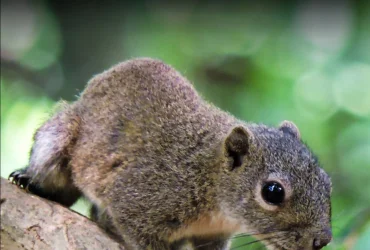 v10i1.252
v10i1.252ISSN: 1800-427X (print)
eISSN: 1800-427X (online)
DOI:10.47605/tapro.v10i1.252
Submitted date: 26 April 2021
Accepted date: 24 May 2021
Published date: 27 May 2021
Pp. 66–70, pl. 15.
Roosting of black kites (Milvus migrans) in Dhaka Metropolis, Bangladesh
S. Hasan, A.M.M.K. Abedin, A.K.Sarker & H. Naner*
*E-mail: likhi.habibon@gmail.com
Black kites, Milvus migrans, thrive in urban areas, agricultural areas and grasslands with adequate nesting locations and also occurs in villages and towns, deciduous forest and open areas including wetlands throughout Bangladesh. Black kites roost communally in trees and groves of trees. Communal roosting is thought to provide benefits in terms of decreased predation risk and increased foraging efficiency. Some findings suggest communal roosting is influenced by day length, light intensity and local environmental conditions but this remains controversial. Roosting sites can play a significant role in population regulation in birds.
Section Editor: Sampath Seneviratne
eISSN: 1800-427X (online)
DOI:10.47605/tapro.v10i1.252
Submitted date: 26 April 2021
Accepted date: 24 May 2021
Published date: 27 May 2021
Pp. 66–70, pl. 15.
Roosting of black kites (Milvus migrans) in Dhaka Metropolis, Bangladesh
S. Hasan, A.M.M.K. Abedin, A.K.Sarker & H. Naner*
*E-mail: likhi.habibon@gmail.com
Black kites, Milvus migrans, thrive in urban areas, agricultural areas and grasslands with adequate nesting locations and also occurs in villages and towns, deciduous forest and open areas including wetlands throughout Bangladesh. Black kites roost communally in trees and groves of trees. Communal roosting is thought to provide benefits in terms of decreased predation risk and increased foraging efficiency. Some findings suggest communal roosting is influenced by day length, light intensity and local environmental conditions but this remains controversial. Roosting sites can play a significant role in population regulation in birds.
Section Editor: Sampath Seneviratne
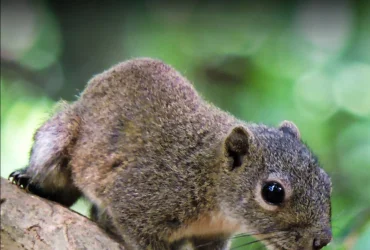 v10i1.251
v10i1.251ISSN: 1800-427X (print)
eISSN: 1800-427X (online)
DOI:10.47605/tapro.v10i1.251
Submitted date: 22 April 2021
Accepted date: 17 May 2021
Published date: 27 May 2021
Pp. 64–65, pls. 13–14.
Unusual nesting behaviour of white-throated kingfisher (Halcyon smyrnensis)
T.G.S.L. Prakash, S. Jayakody, A.G.K. C. Perera, R. Gamage & T.G.T. Kusuminda
*E-mail: prakashtgsl@gmail.com
The white-throated kingfisher or white-breasted kingfisher, Halcyon smyrnensis is a common breeding resident found throughout Asia. Both sexes are alike; juveniles are duller than the adults. They breed yearly from January to August in pairs, but the breeding season begins earlier in India and Sri Lanka. The most active period of breeding related activities is from April to July. Deep burrows (about 50 cm to 1 m) are dug by mating birds into a vertical embankment or wall for the construction of nests. They are common in agricultural landscapes, swamps, marshes, near ponds, lakes, parklands, mangrove swamps, and gardens. However, we have observed a nest of white-throated kingfisher in an artificial nest box towards the end of December 2020 in Moratuwa, Sri Lanka, the first documented record of such breeding behaviour in Sri Lanka and throughout its range. This note highlights the key observations made.
Section Editor: Vincent Nijman
eISSN: 1800-427X (online)
DOI:10.47605/tapro.v10i1.251
Submitted date: 22 April 2021
Accepted date: 17 May 2021
Published date: 27 May 2021
Pp. 64–65, pls. 13–14.
Unusual nesting behaviour of white-throated kingfisher (Halcyon smyrnensis)
T.G.S.L. Prakash, S. Jayakody, A.G.K. C. Perera, R. Gamage & T.G.T. Kusuminda
*E-mail: prakashtgsl@gmail.com
The white-throated kingfisher or white-breasted kingfisher, Halcyon smyrnensis is a common breeding resident found throughout Asia. Both sexes are alike; juveniles are duller than the adults. They breed yearly from January to August in pairs, but the breeding season begins earlier in India and Sri Lanka. The most active period of breeding related activities is from April to July. Deep burrows (about 50 cm to 1 m) are dug by mating birds into a vertical embankment or wall for the construction of nests. They are common in agricultural landscapes, swamps, marshes, near ponds, lakes, parklands, mangrove swamps, and gardens. However, we have observed a nest of white-throated kingfisher in an artificial nest box towards the end of December 2020 in Moratuwa, Sri Lanka, the first documented record of such breeding behaviour in Sri Lanka and throughout its range. This note highlights the key observations made.
Section Editor: Vincent Nijman
Hubungi Kami
The ultimate aim of the journal is to provide an effective medium for communication of the latest and best scientific information.
Copyright © 2020 Taprobanica. All Rights Reserved
Jasa Pembuatan Website by IKT




